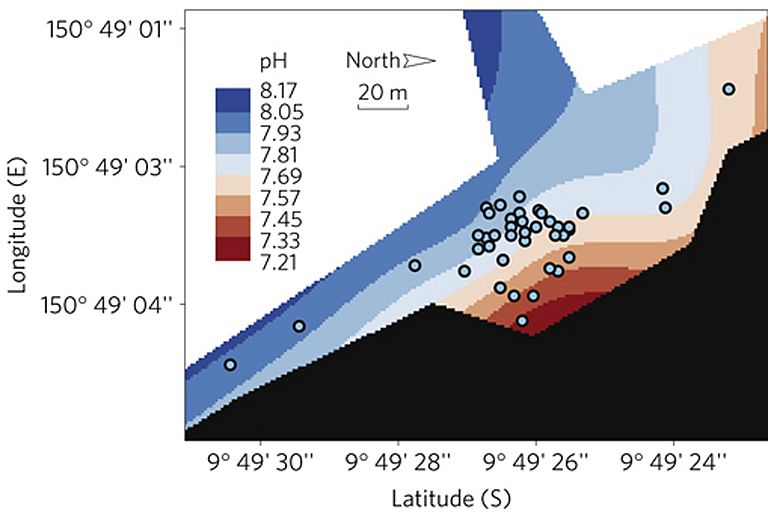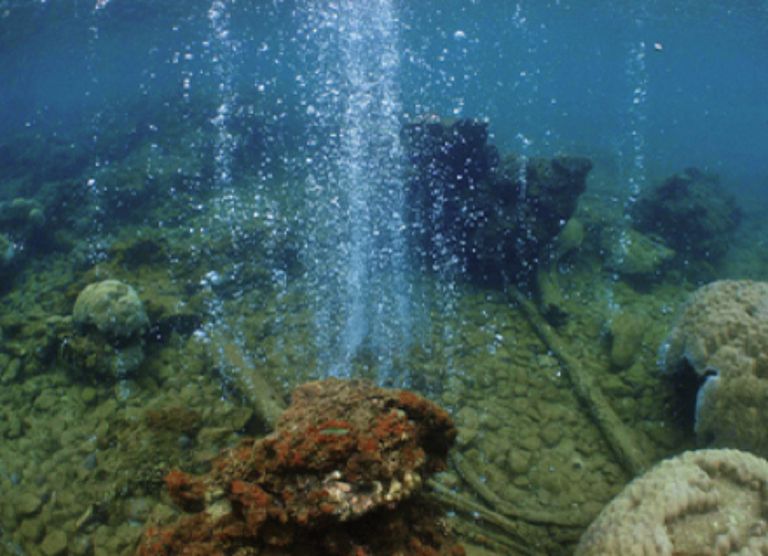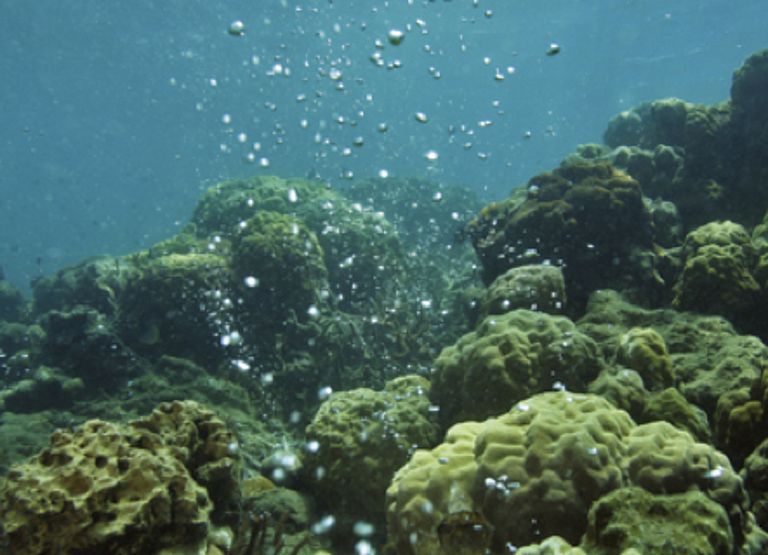Looking back into the future: Are corals able to resist a declining pH?
Samples from reefs at natural carbon dioxide vents facilitate predictions
Because the oceans absorb man-made carbon dioxide (CO2) from the atmosphere, its pH declines. Effects of this chemical change on tropical coral reefs can be examined in laboratory or short-term field experiments. However, a team led by Dr. Marlene Wall, marine biologist at GEOMAR Helmholtz Centre for Ocean Research Kiel, chose a different approach: In the framework of the German research network BIOACID (Biological Impacts of Ocean Acidification), they examined corals of the genus Porites, which grow at volcanic carbon dioxide vents in Papua New Guinea and have become a dominant species there.
“It is very difficult to foresee if tropical corals are able to survive global climate change. These organisms are very sensitive to a rise in water temperatures, ocean acidification and pollution”, explains Dr. Wall. “The natural carbon dioxide vents give us the opportunity to study the scenario of the future already today. Previous studies have shown that Porites is among the winners. But up to now, no one knew how they manage.”
Porites corals keep their internal pH at a level at which they are able to produce calcium carbonate and grow despite higher carbon dioxide concentrations and lower pH in the surrounding water – a significant advantage over many other species. In this way, they have established themselves under extreme conditions. “According to our observations, the pH regulation is a key feature when it comes to surviving under a lowered pH”, emphasizes Dr. Wall. The findings about pH regulation in corals are published in the journal “Scientific Reports”.
To better understand the ability of pH regulation, the scientific team led by Dr. Wall examined corals using the boron isotope method. For these measurements, a laser is directed at the skeletons. Material that comes off during this procedure is analysed in a mass spectrometer. The isotopic composition of boron that is included in the skeleton reveals information on the coral’s internal pH. “This method gives us new insights and allows for conclusions about the physiology of the coral skeleton at the time of calcification”, says Dr. Jan Fietzke, a physicist at GEOMAR and co-author of the study. “You could say we look back into the future.”
For the study described in the current publication, Fietzke examined the skeleton which had been formed a few days to weeks before sampling. Comparisons with pH measurements in the surrounding water proved that the boron isotopes reflected the internal pH of the coral and that it was different from the pH of the environment – pH regulation has taken place. Based on this knowledge, cores from several decades old corals are currently being evaluated. “So we can find out when and how quickly they have acclimatized.”
By looking back to the future, the researchers found out that Porites corals have a remarkable ability to level their pH for decades and thereby counteract global climate change. “But we had to learn that regulation is only possible up to a certain degree. When carbon dioxide concentrations exceed values that are expected after the year 2100, calcification and growth are lower – and even the winner reaches its limit”, according to Dr. Wall. “Our results prove how important it is to combine laboratory experiments with long-term field studies and observations. Controlled laboratory experiments provide an understanding of the pH control, but only in combination with field observations, they paint a more detailed picture about possible long-term consequences.”
Original publication:
Wall, M., Fietzke, J., Schmidt, G.M., Fink, A., Hofmann, L.C., de Beer, D., Fabricius, K.E., 2016: Internal pH regulation facilitates in situ long-term acclimation of massive corals to end-of-century carbon dioxide conditions. Scientific Reports 6:30688, doi: 10.1038/srep30688
BIOACID in brief:
Under the umbrella of BIOACID (Biological Impacts of Ocean Acidification), 10 institutions examine how marine ecosystems react to ocean acidification, how this affects the food web and the exchange of material and energy in the ocean and how the changes influence the socio-economic sector. The project is funded by the Federal Ministry of Education and Research (BMBF) and coordinated by GEOMAR Helmholtz Centre for Ocean Research Kiel. A list of member institutions and further information can be found on the website www.bioacid.de
Contact:
Maike Nicolai (GEOMAR, Communication & Media), Tel.: +49(0)431 600-2807, presse@geomar.de






